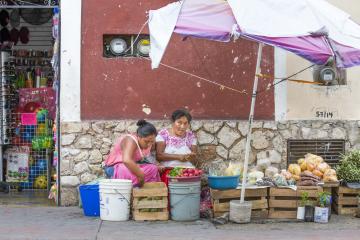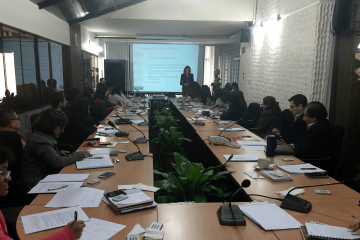
Using (and generating) evidence to fight intimate partner violence in Latin America and the Caribbean

Intimate partner violence (IPV) against women—understood as abuse or aggression that occurs in a romantic relationship—is an ongoing problem in Latin America and the Caribbean (LAC); The World Health Organization estimates that one out of four women in the region has been subjected to physical and/or sexual intimate partner violence since age 15. In the Americas, 40 percent of women's homicides were perpetrated by a family member or an intimate partner; over the last 10 years, female intimate partner/family related homicides increased by 9 percent.
Due to the harmful effects of IPV, it is imperative to modify the interpersonal, social, and institutional factors related to the prevalence and intensity of this problem. Fortunately, there are some strategies to address these issues that have been tested in other contexts. Although similar efforts are in place throughout the LAC region, further research is needed to assess their effectiveness rigorously.
This blog post showcases some of these interventions with potential for positive impacts as a call to contribute to the generation of reliable evidence for policy-making in the struggle against IPV.
Changing individual behaviors and attitudes
One strategy to reduce IPV is to change gender attitudes and pernicious behaviors among youth and adults. To reduce dating violence—a predictor of IPV in adulthood—interventions aimed at young people have shown encouraging outcomes in urban contexts with high exposure to violence and in populations with a large presence of Hispanics. These approaches have been implemented in LAC and preliminary results suggest probabilities of success: In Mexico, a quasi-experimental evaluation was conducted on the school program “Amor... pero del bueno” (True love), which sought to combat dating violence. Among its primary outcomes was a reduction of 58 percent in the perpetration of psychological violence by the participating young men.
In a pandemic context, virtual interventions have gained relevance to address IPV. As a case in point, in 2020, J-PAL affiliate Erica Field and Javier Romero evaluated a messaging campaign to reduce intimate partner violence in urban areas of Peru. This intervention aims to provide participating men with emotion management tools in a context of low mobility and scarce resources; results are forthcoming.
Challenging gender stereotypes and social norms
Another path of action, also supported by empirical evidence, consists of community-based interventions that address gender stereotypes and social norms in low and middle-income countries. Successful interventions should actively involve community members in strategic roles, such as facilitators or local leaders, but cultural adaptation is also essential for effectiveness.
For example, the SASA! Activist Kit for Preventing Violence against Women and HIV, assessed through a randomized evaluation in Uganda, is an intervention based on the training of “local activists” who, through informal activities, encourage critical analysis of the domination exercised over women and how men can use their influence to positively change community dynamics. Initially applied in sub-Saharan African countries, SASA! has been adapted in Haiti; preliminary figures indicate that 94 percent of participants agreed with the statement “a man has no right to slap a woman if he is mad.” In addition, the number of male participants who said “it is a woman's fault if she is raped” was reduced by half.
Community interventions can also contribute to improvements in exercising women's sexual and reproductive rights. An assessment conducted in rural Guatemala found that community workshops for changing gender social norms and promoting the use of contraceptive methods modified the attitudes of male participants, encouraging joint decision-making, and generally improving the level of knowledge about modern contraceptive methods.
Institutional change to eradicate femicides
A third strategy consists in promoting institutional changes. Femicides are the ultimate expression of IPV, and the most common institutional responses in the region consist of legal modifications and the recognition of femicide as a criminal offense. However, legal reforms are hard to implement, and interventions related to changes in the functioning of law enforcement organizations might have positive effects in reducing violence against women.
Interventions tested in the United States and England suggest that early police involvement reduces the likelihood of recidivism among perpetrators, and research shows that innovations in crime reporting ease women's access to the criminal justice system and reduce the likelihood that the violence they experience will escalate. As part of the promissory practices in place in LAC, a quasi-experimental evaluation conducted in Brazil links the existence of precincts focused on the criminal prosecution of rape and IPV to a reduction in the rate of female homicides by 1.23 deaths per 100,000 among women aged 15-49 in urban municipalities.
The way forward
The studies and examples explored here show potential paths to action: for decision-makers, these are some examples of options to be tested on a broader scale; for researchers, this is an invitation to gather evidence in LAC in order to design better public policies aimed at addressing IPV. For instance, J-PAL’s Gender and Economic Agency Initiative is a great opportunity to build an understanding of the role of women’s economic empowerment in addressing IPV in the region.
This blog post is part of a blog series commemorating International Women’s Day. Register here for receiving a notice when new pieces are published. You can also check the second and third blog posts of the series. We want to thank Isabela Salgado, Yvette Ramírez, and María Paz Monge for their comments and suggestions.


